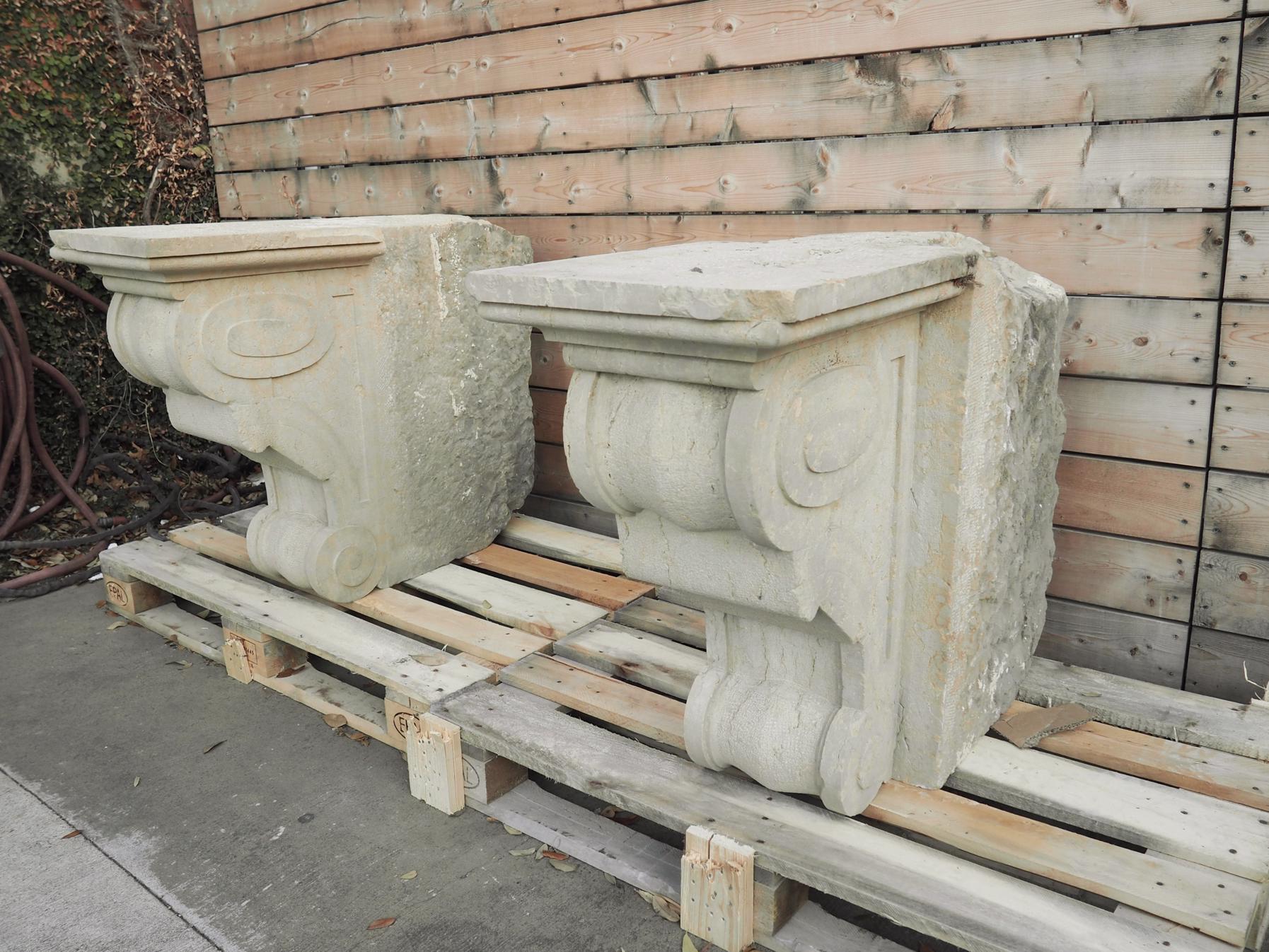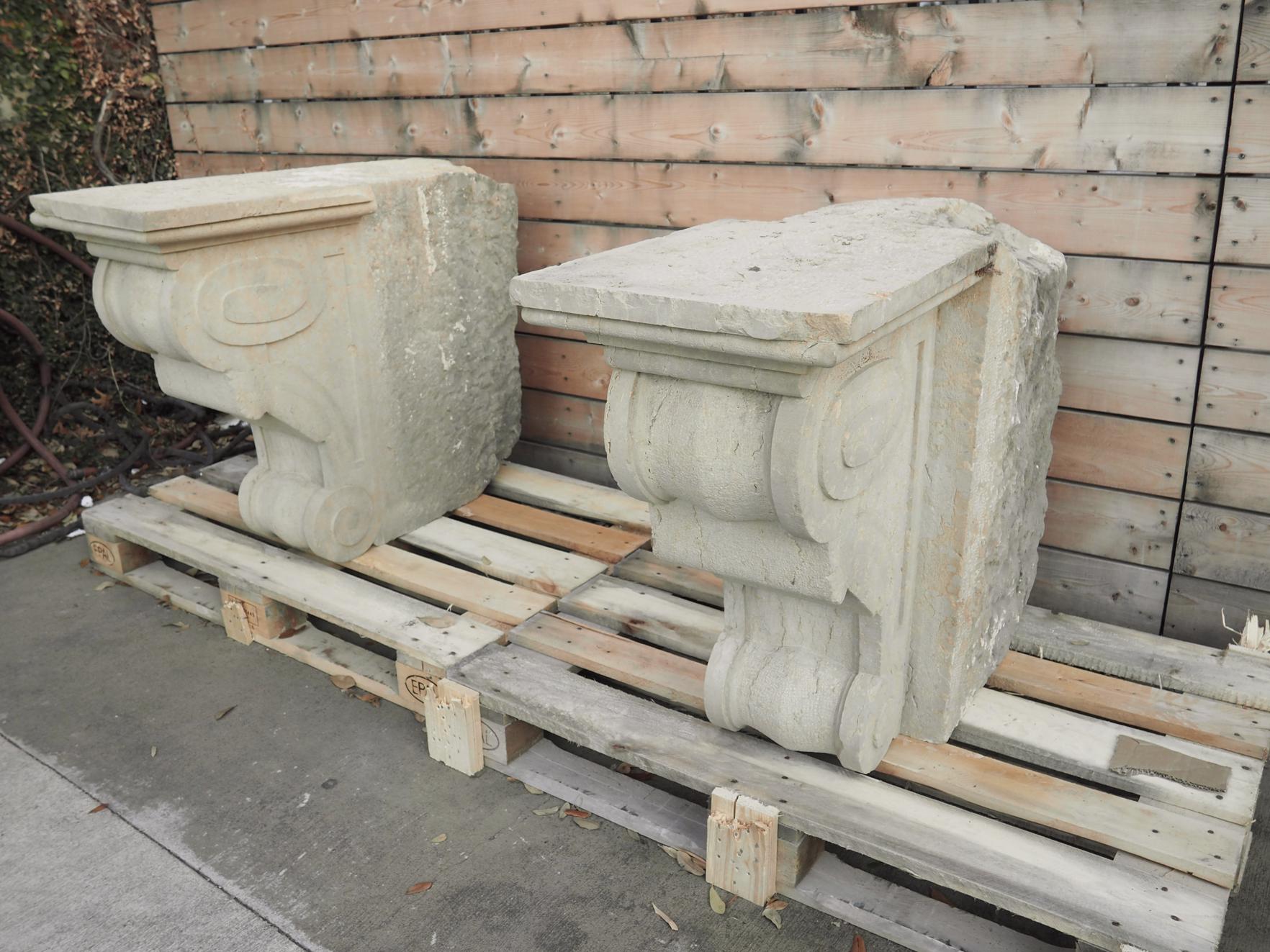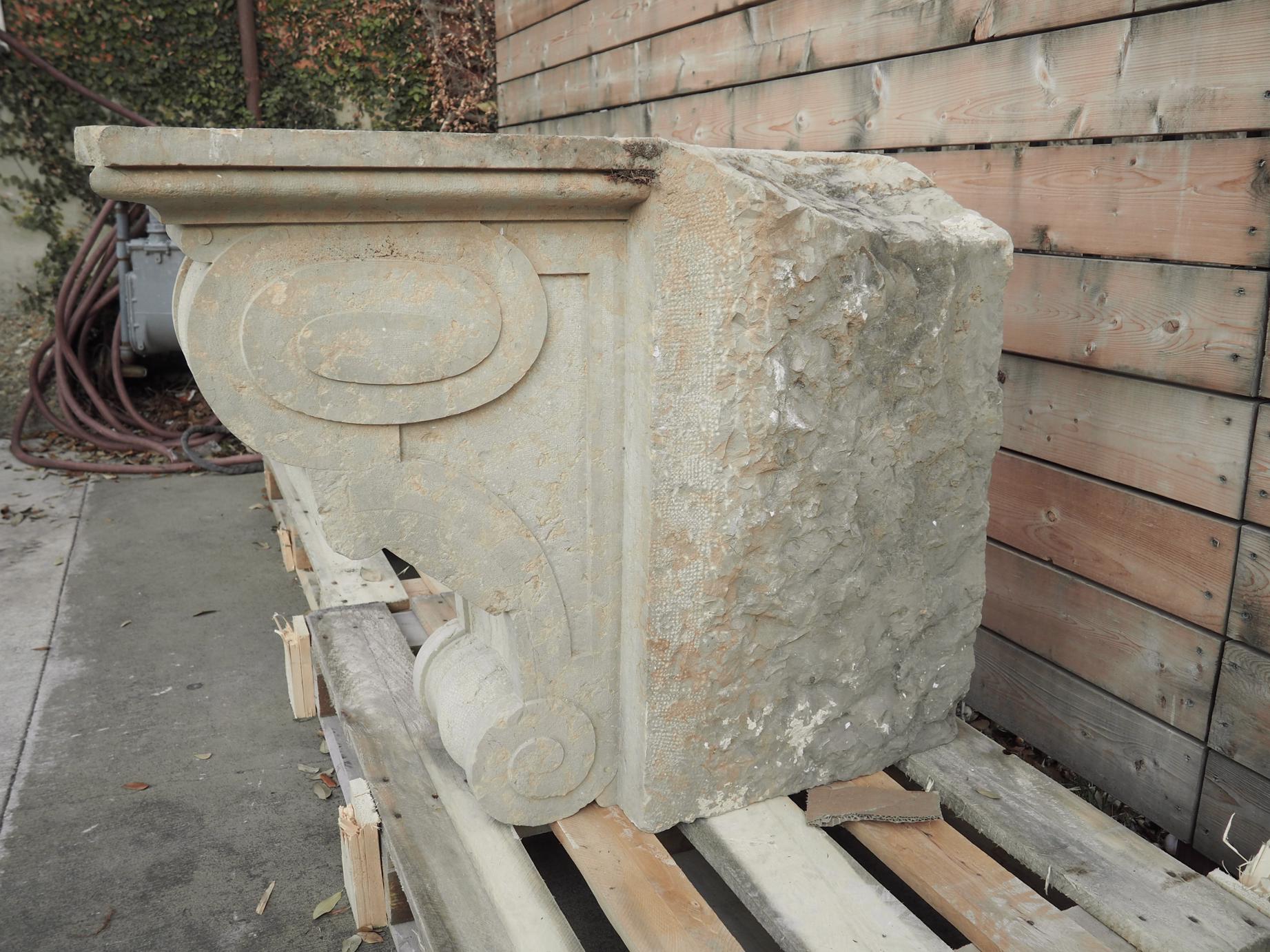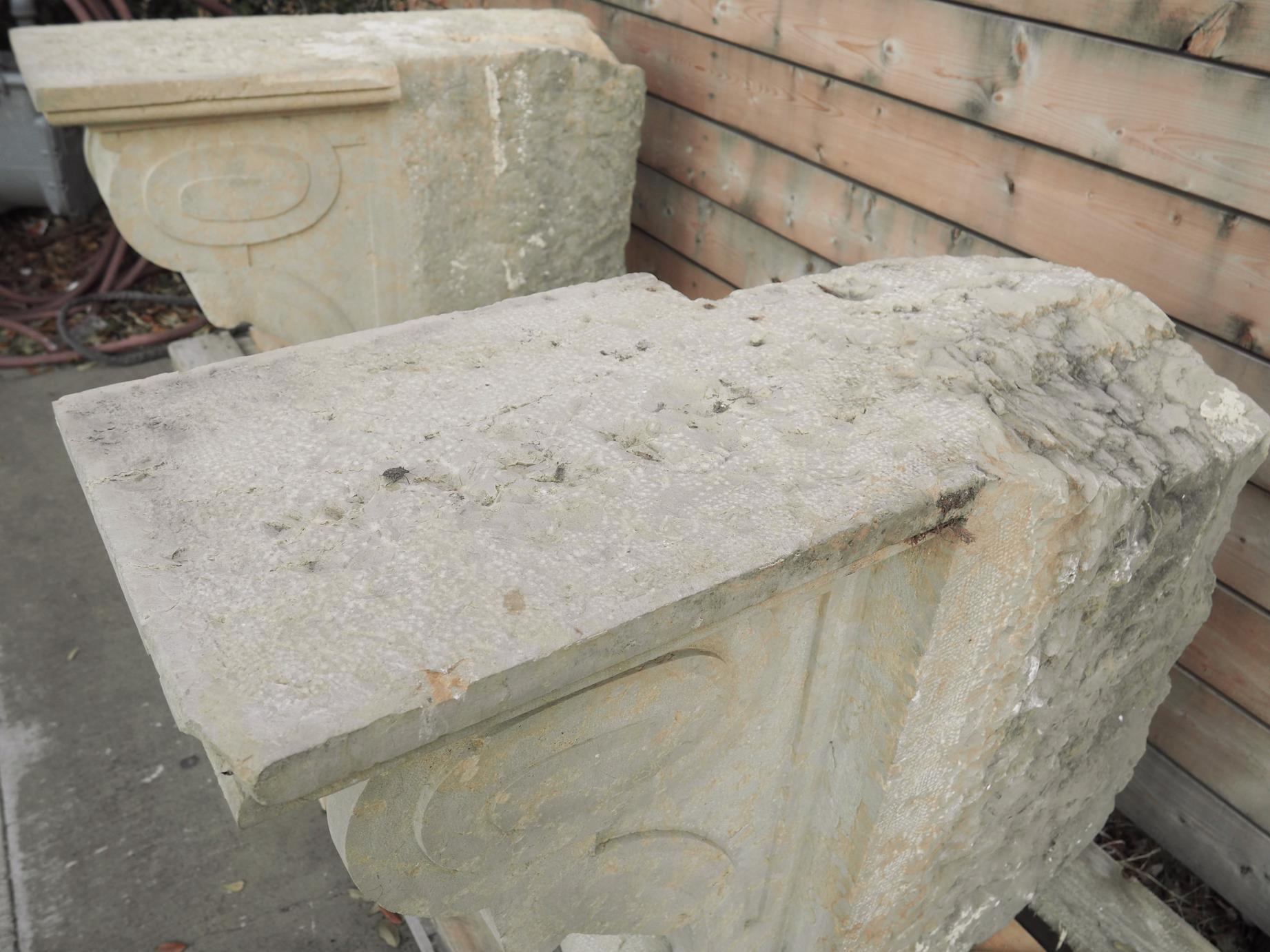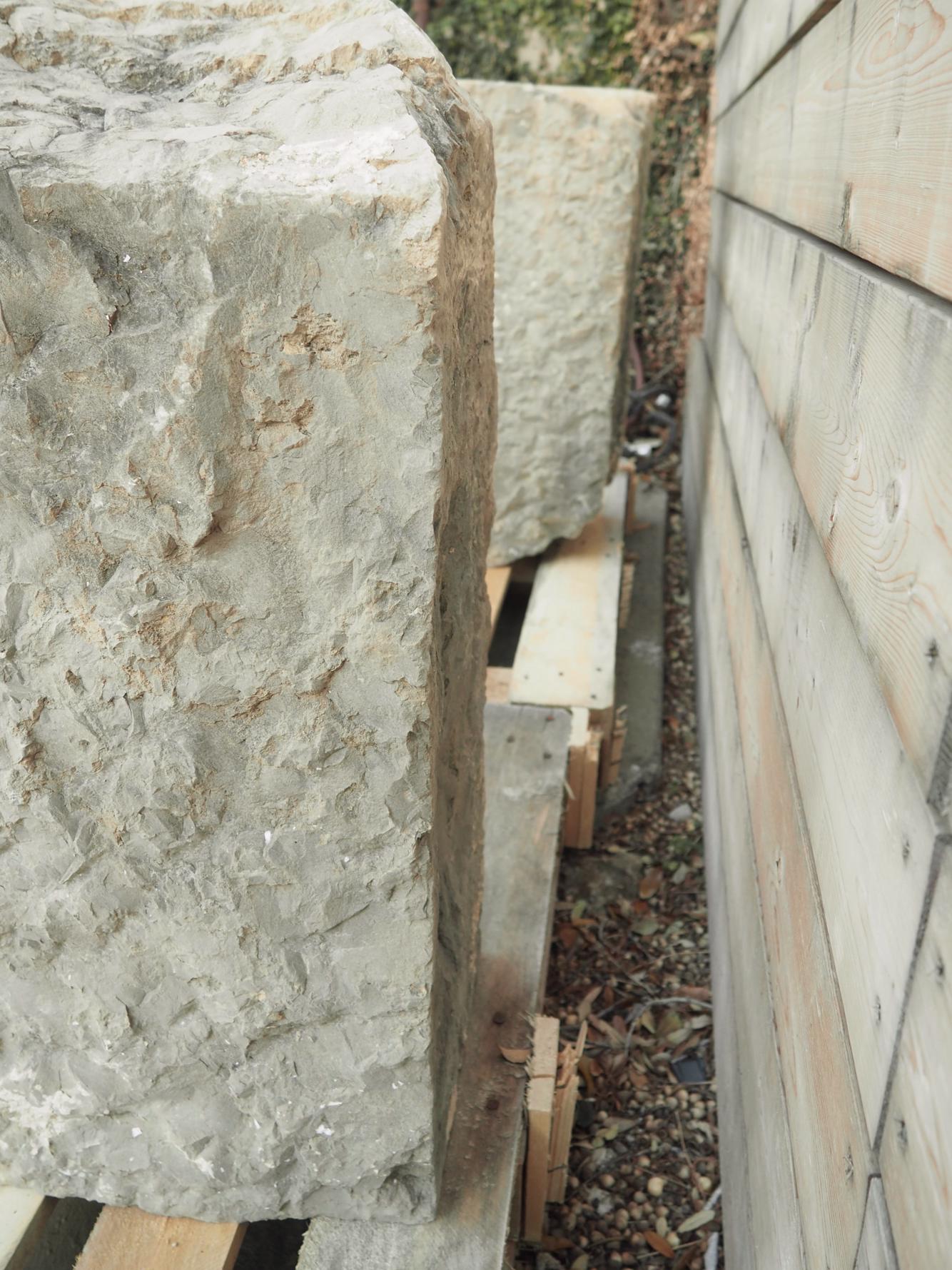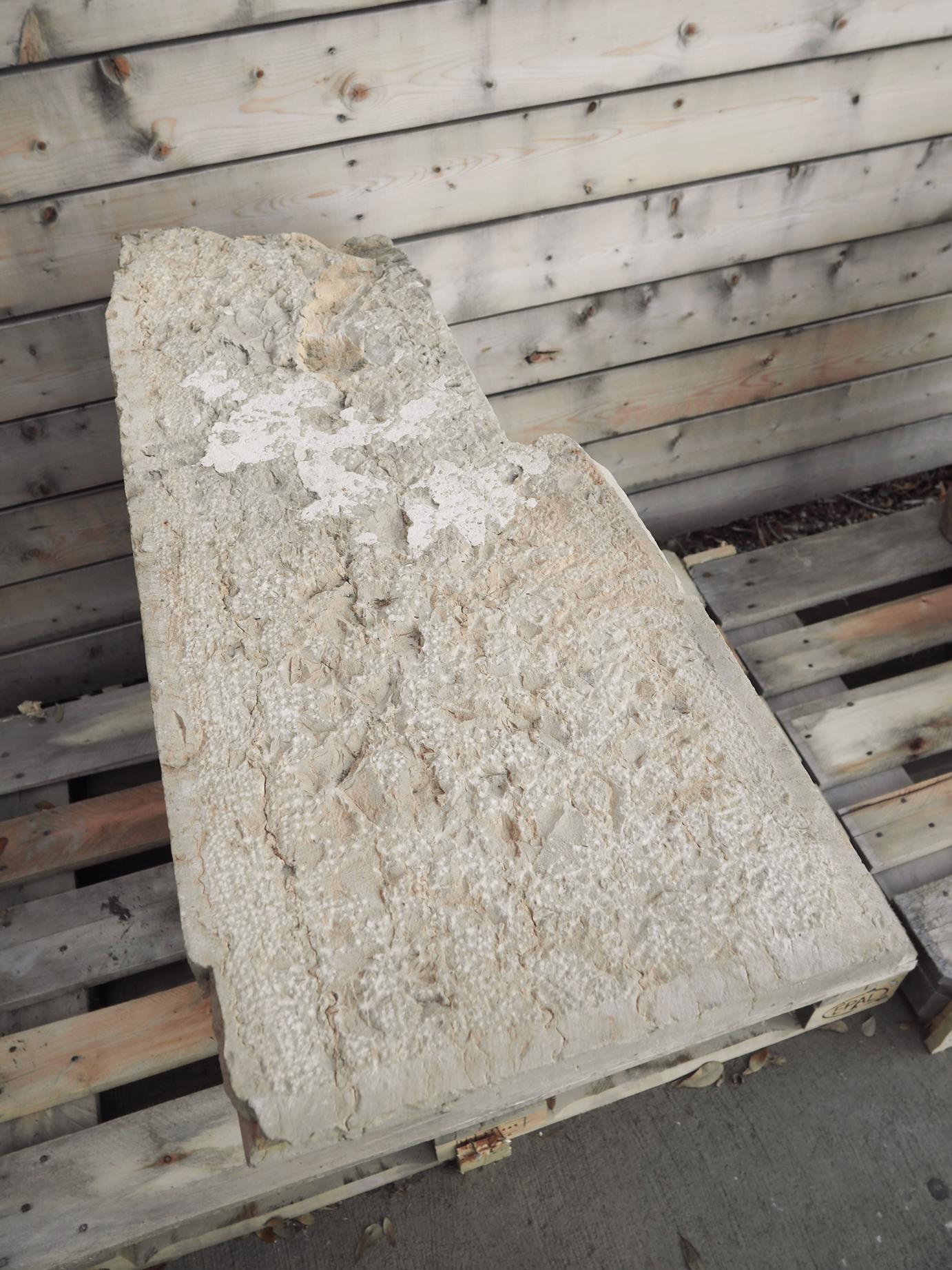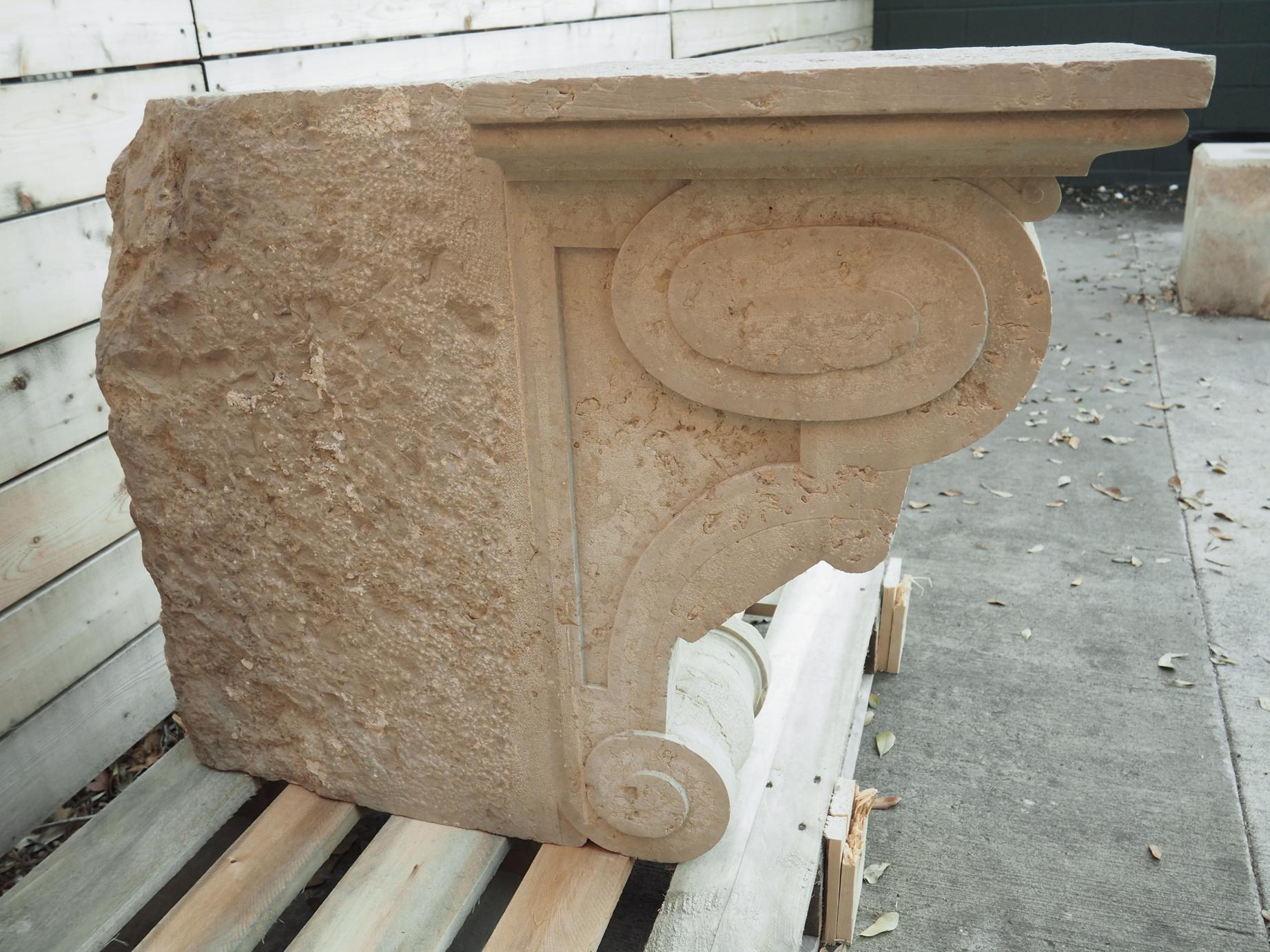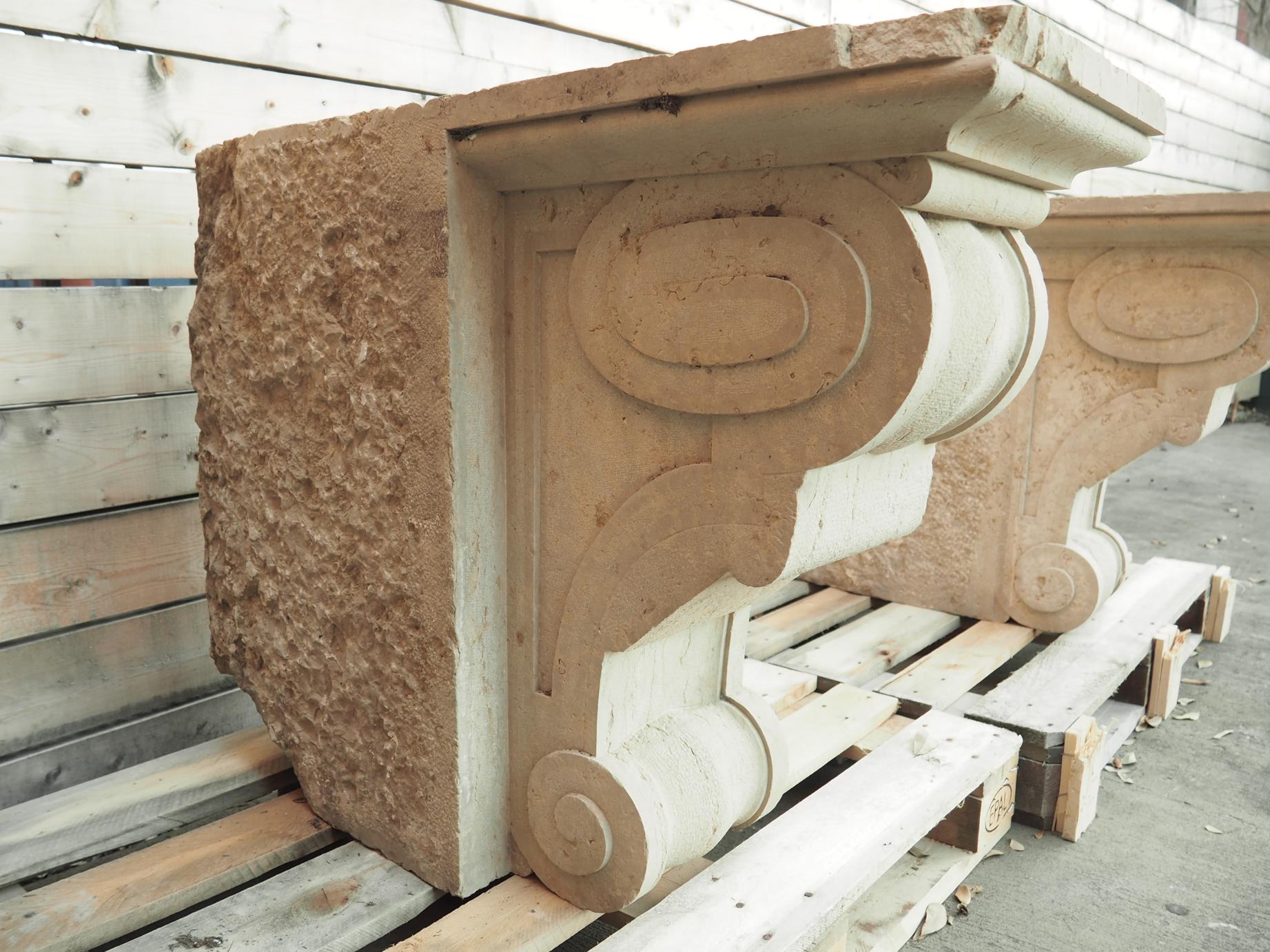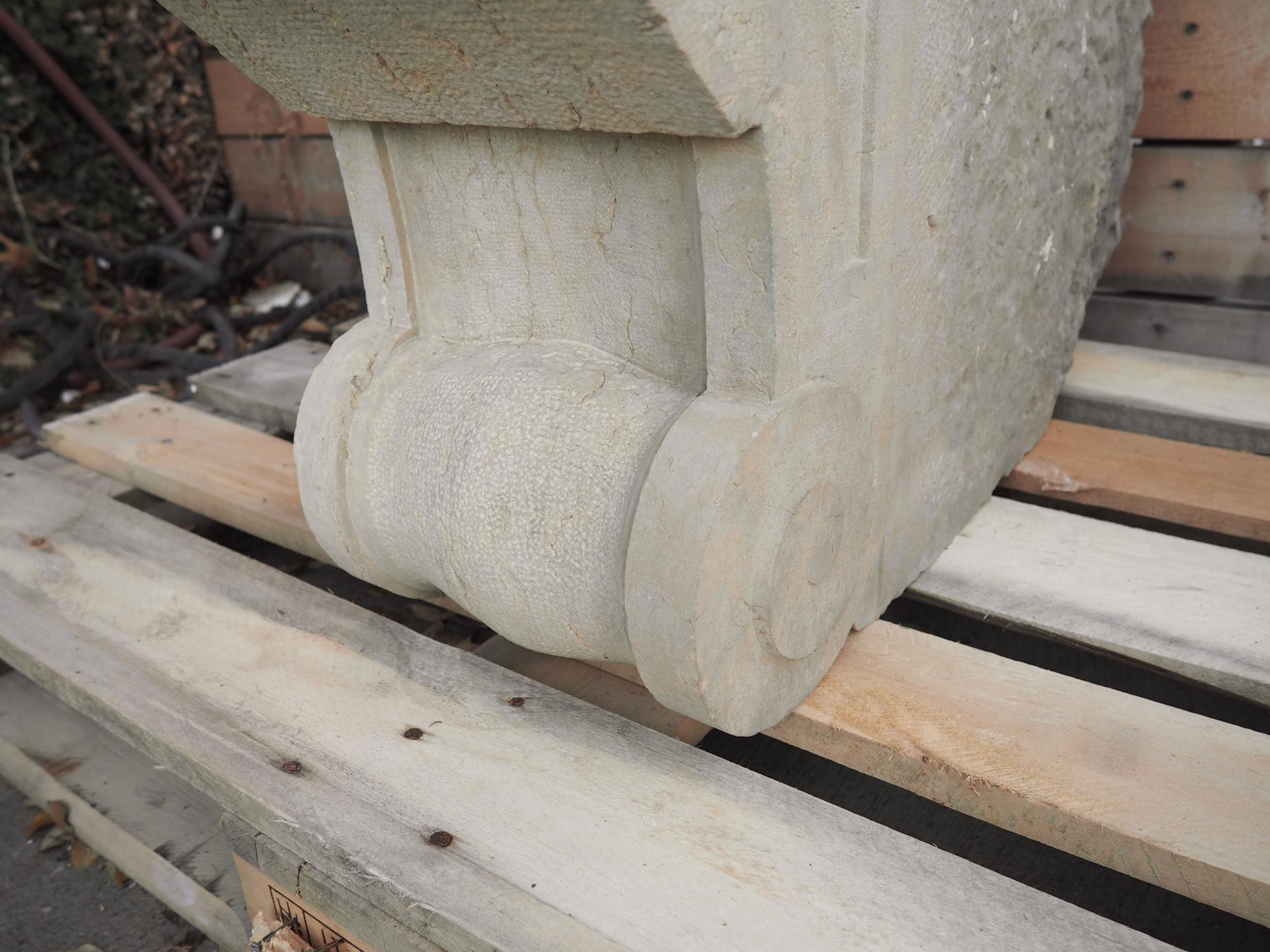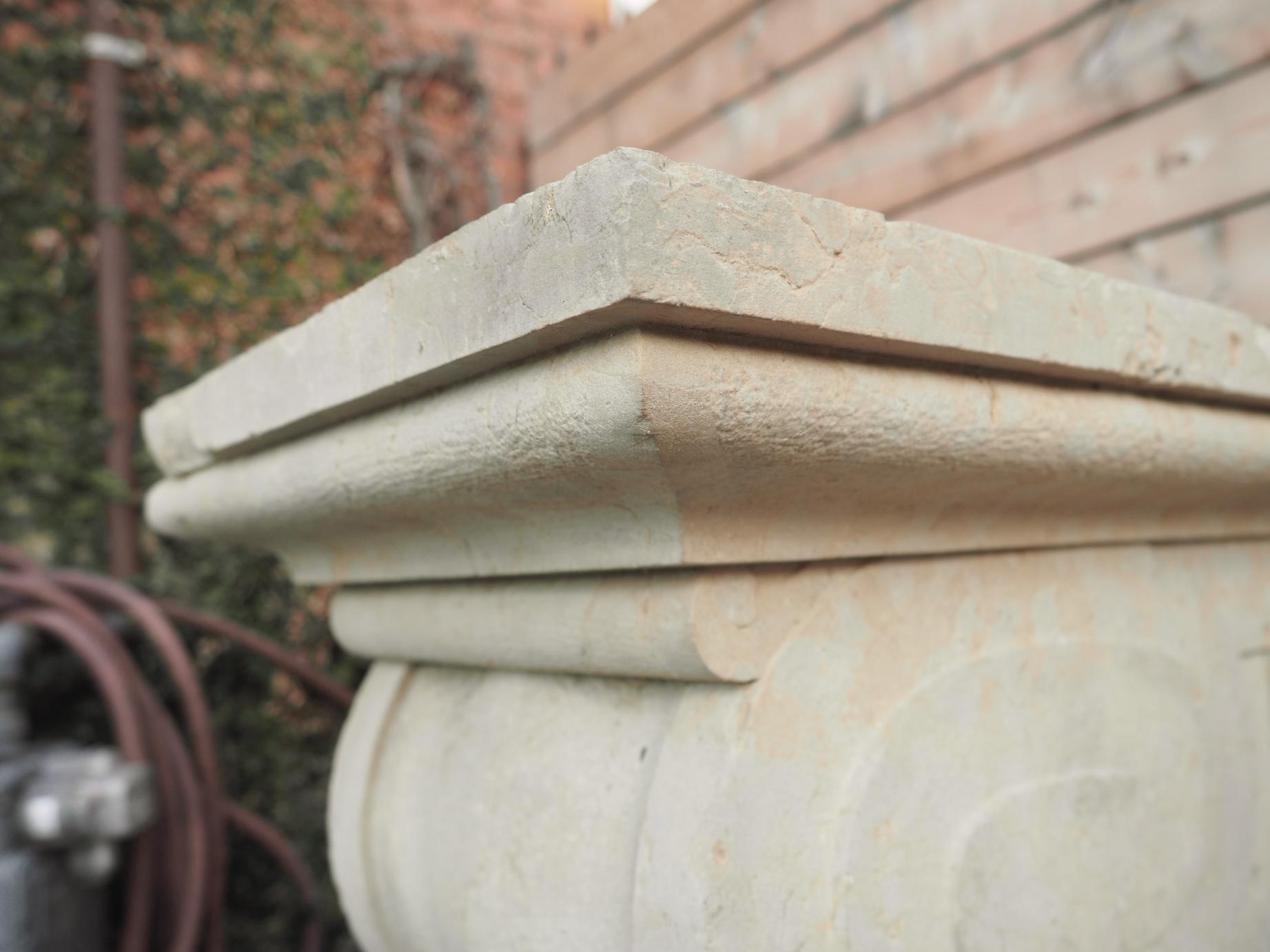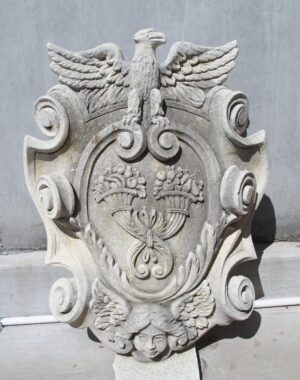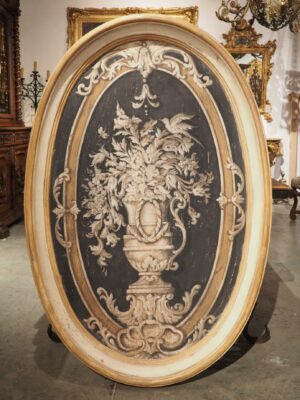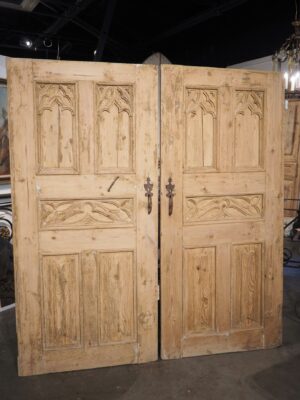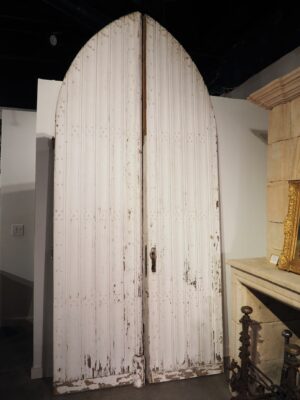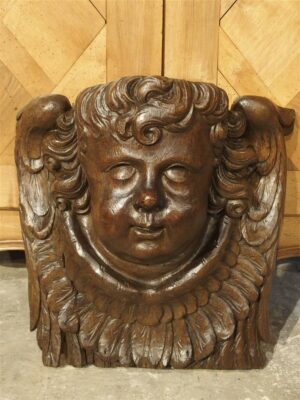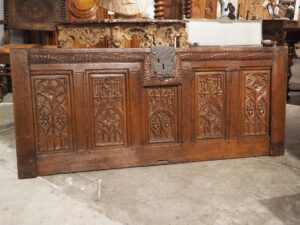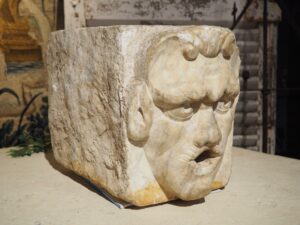Excavated from an important French building, most likely a cathedral or house of worship in the Lyon area, this pair of balcony corbels are from the Napoleon III period (sometimes called Second Empire style). Each corbel was hand-carved in pierre de villebois stone, which is a very hard limestone used quite frequently in large-scale religious construction.
A corbel is an architectural S-shaped bracket that is affixed to the side of a building, designed to support weight from underneath, in this case a balcony. Corbels are typically placed high off the ground, allowing the carved details to be seen from far off. Both corbels have been hand-carved with a pair of distinct volutes on the facing, with the top scroll extending outwards farther than the lower. A principle of Napoleon III architecture was to leave no space bare: the scrolls are connected by sinuous carved molding that mirrors the thin ogee molding of the top frieze.
The gray-colored corbels have developed a lovely warm cream patina from years of exposure to the elements. They could once again be installed architecturally or repurposed into bases for a fascinating console table.
CONDITION: Good antique condition with wear commensurate to age and use, including minor nicks and losses. Light staining and discoloration in some areas. The corbels were excavated from a previous installation, resulting in a discrepancy of the dimensions (proper installation will negate any variance). Stone is a natural material that can become darker or lighter from the elements.


